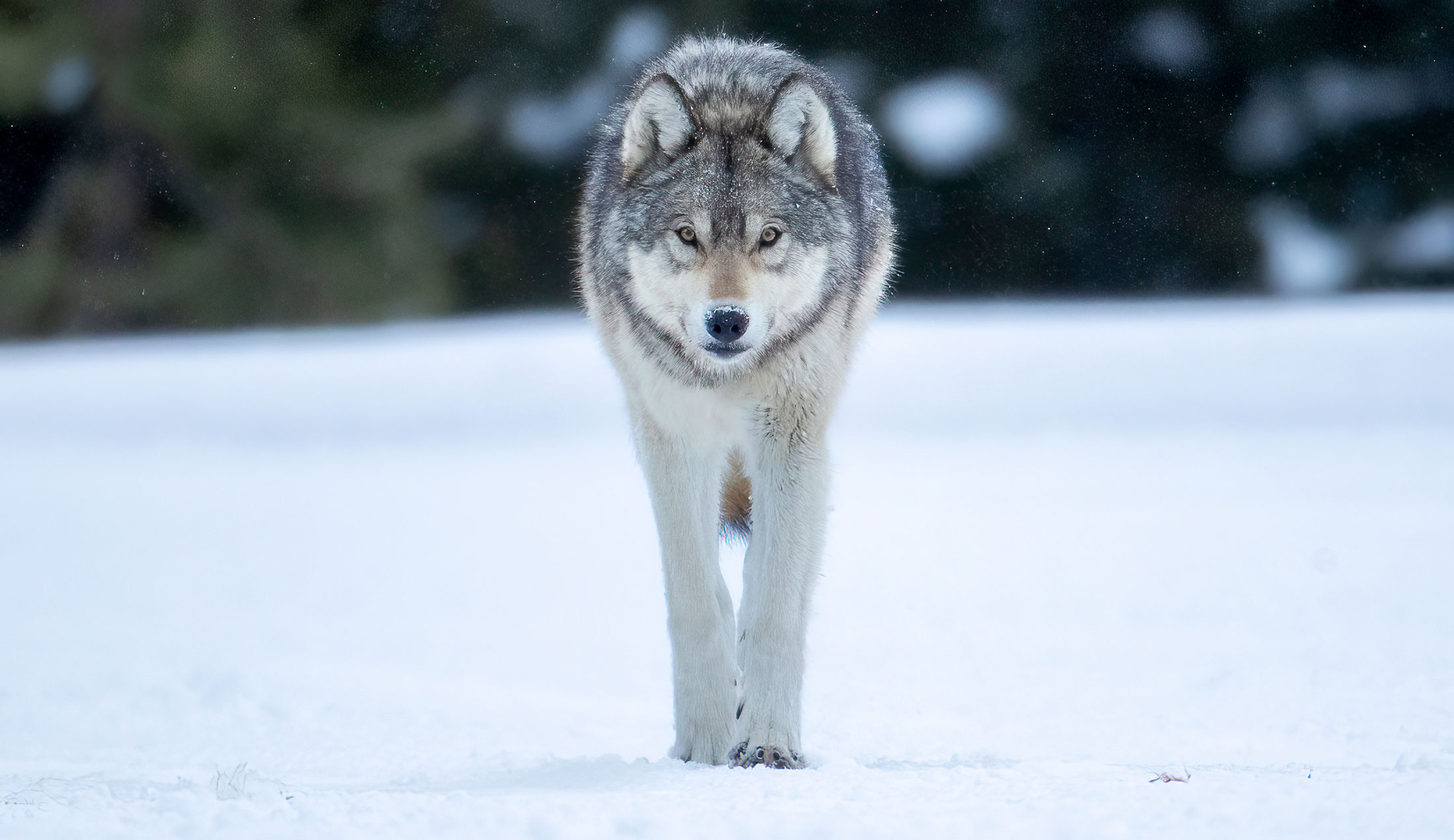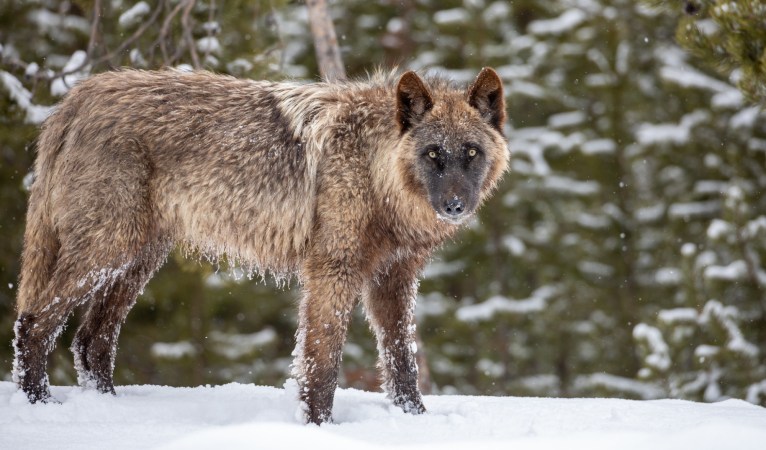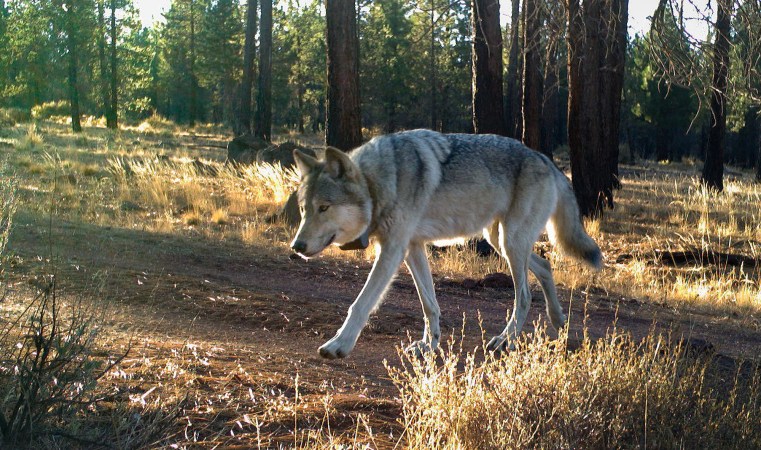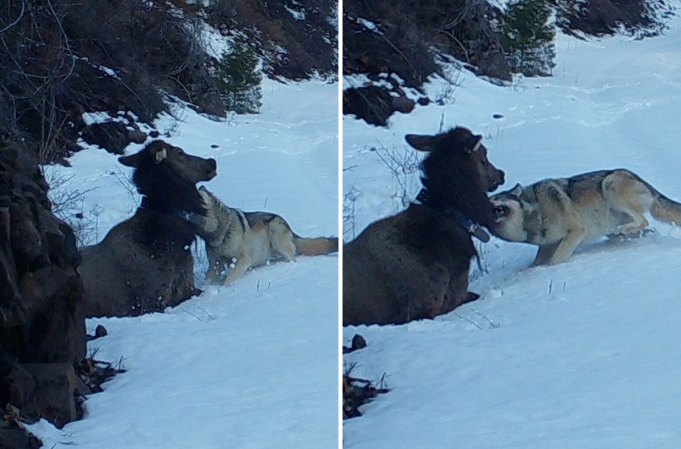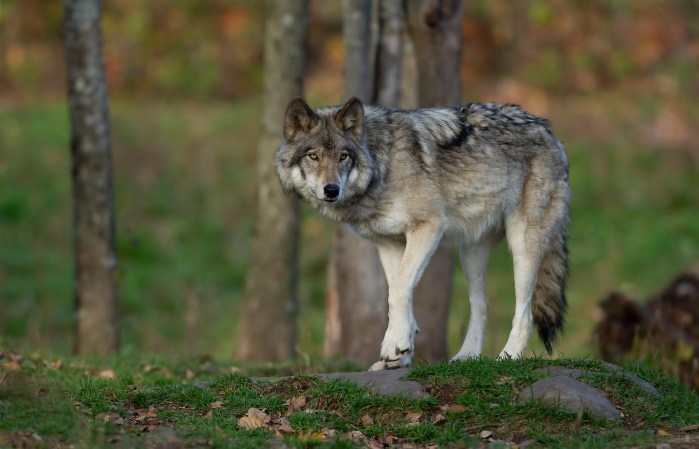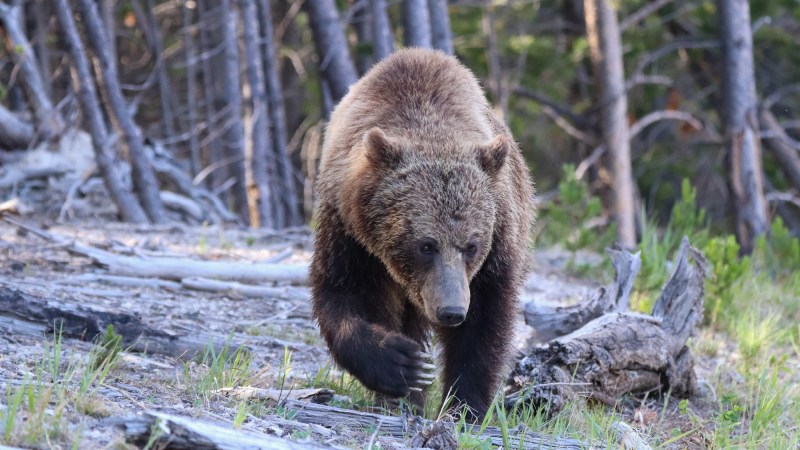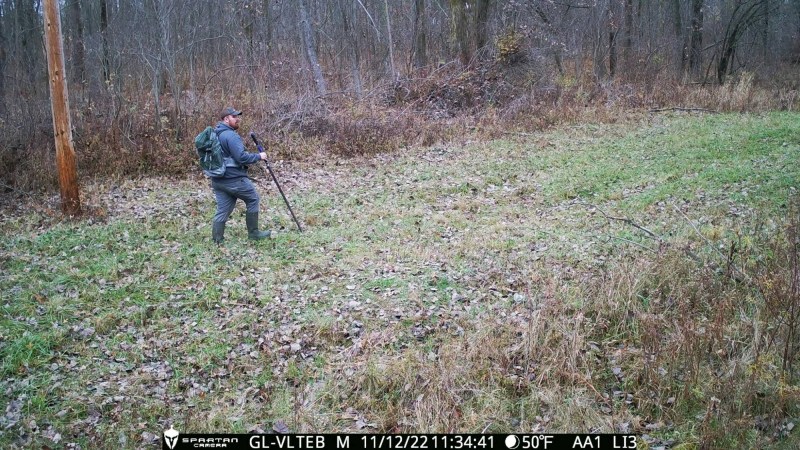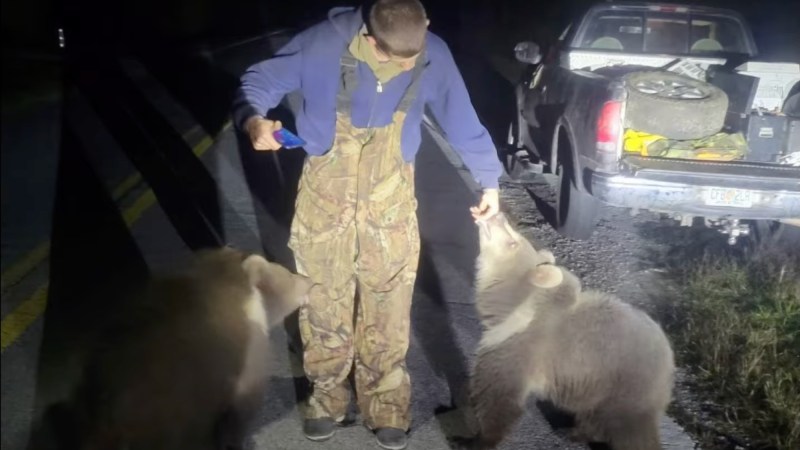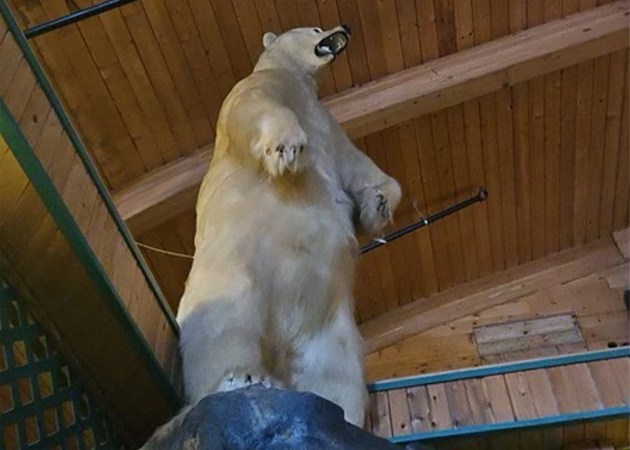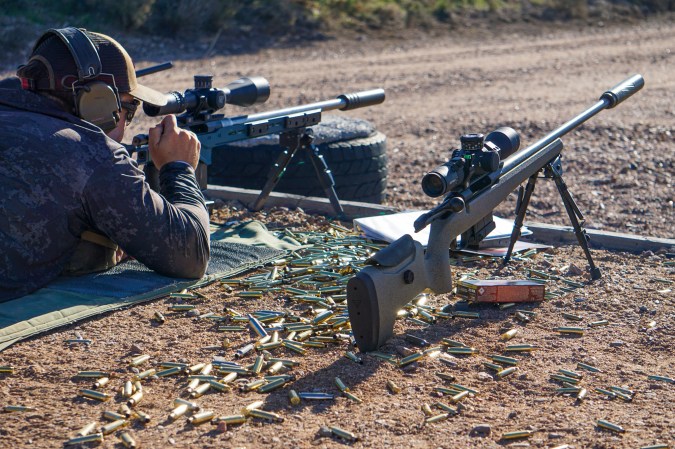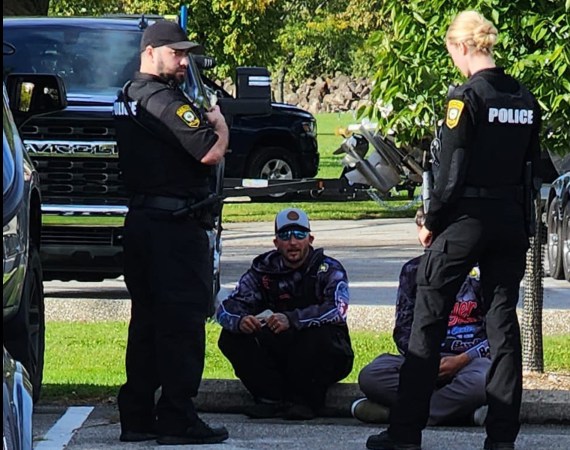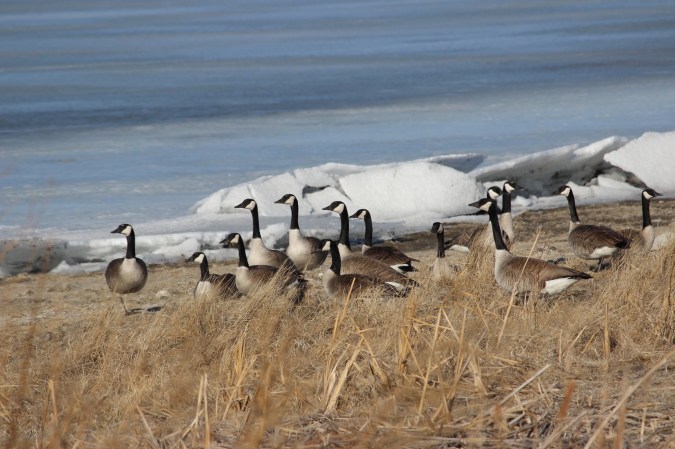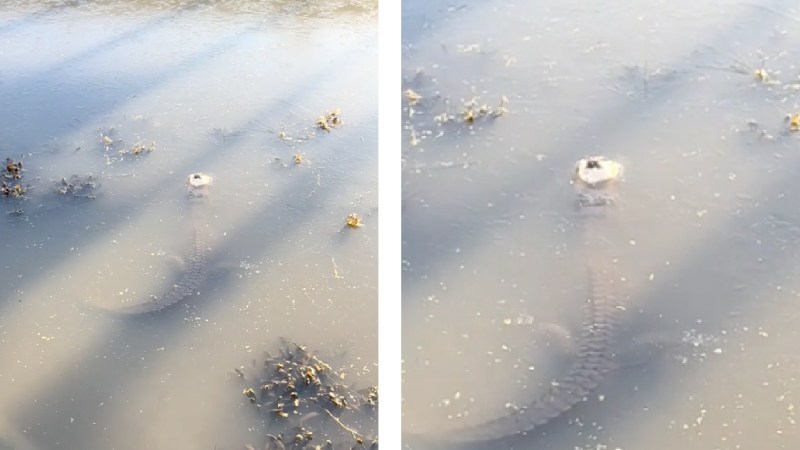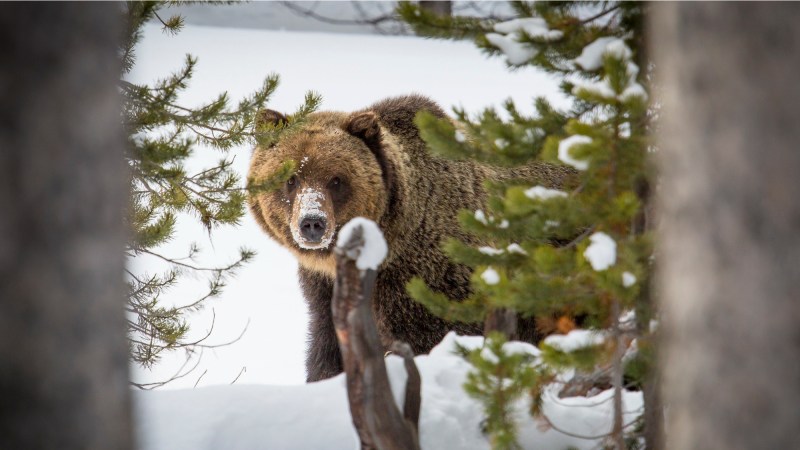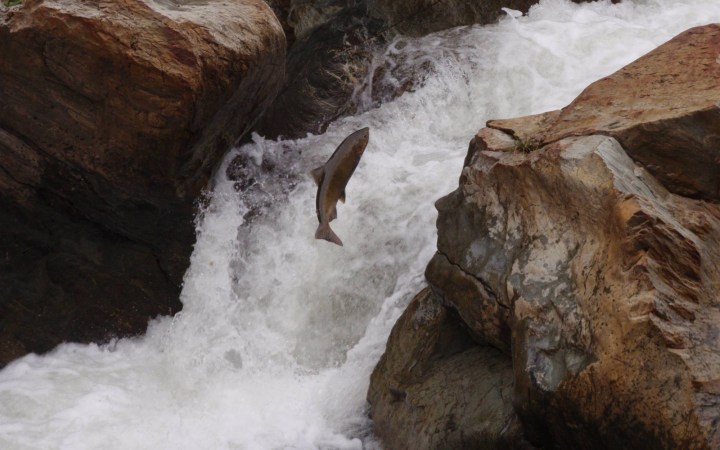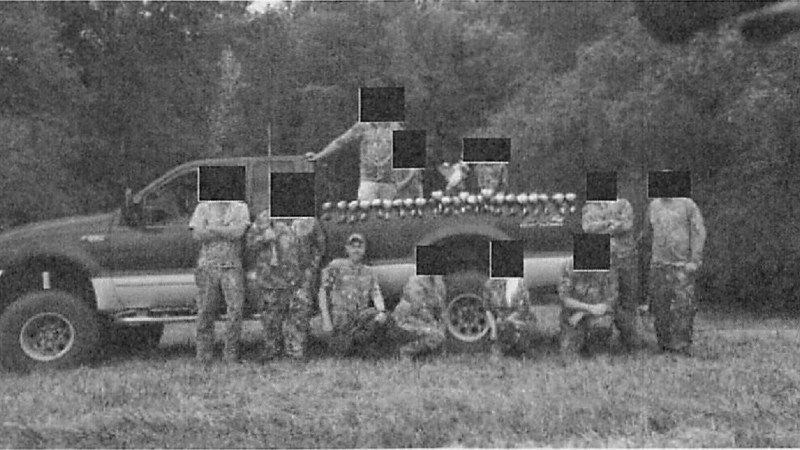A retired Wisconsin conservation warden and prominent figure in state wildlife issues is under investigation for shooting a collared wolf, allegedly in self-defense. Pat Quaintance, who served on the Wisconsin Department of Natural Resources Wolf Management Committee, self-reported the shooting which took place around 1 a.m. on Dec. 25, 2023.
“Patrick Quaintance called us reporting that he killed a collared wolf that was at their back door,” Bayfield County Sheriff Chief Deputy Andy Runice, told the Ashland Daily Press. “Two of our deputies responded to the scene at 2:43 a.m. and took possession of the wolf. He said he shot the wolf because it had been hanging around his yard.”
There was no indication the wolf had attacked a person or pets, according to Runice. The incident took place at Quaintance’s rural residence in Bayfield County in the far northern part of the state.
About Quaintance
Quaintance is the former president of the Wisconsin Wildlife Federation, a current member of the Wisconsin Conservation Congress, and the current president of the Wisconsin Association of Sporting Dogs.
Because of his former position as a state game warden and because wolves are listed as an endangered species in the Upper Great Lake States region (which includes Wisconsin, Minnesota and Michigan), the U.S. Fish and Wildlife Service is conducting the investigation into the shooting instead of the state DNR.
Quaintance, who is an advocate of hunting with hounds and actively hunts a variety of species with his dogs, has previously expressed concerns over their safety because of the high population of wolves in his area.
Quaintance has reported conflicts with wolves to the U.S. Department of Agriculture’s Wildlife Service Division; the WDNR contracts with Wildlife Services to investigate reports of wolf depredation and related complaints.
Quaintance has been vocal in his argument against restrictions in the state DNR’s wolf management plan. He has supported the idea that wolf quotas should be revisited and there should be a fixed number population goal of 350 wolves instead of a fluctuating population goal of 800 to 1,200 individuals, as the new management plan requires. He’s also opposed to the 6-mile closed harvest area around tribal reservations, which were established at the request of the tribes to protect the wolves that leave reservation lands.
The WDNR’s Interactive Wolf Depredation Threats Map shows that on Dec. 18, 2023, just a few days before the shooting took place, Wildlife Services verified that on multiple occasions wolves had been in close proximity to a residence and outdoor kennel in Bayfield County, posing a threat to dogs kenneled there. The exact residence wasn’t listed, but Quaintance has acknowledged reporting incidents of wolves in his yard and their harassment of his dogs several times.
Since his retirement as a Wisconsin warden, Quaintance has been cited for illegal trapping, something that anti-wolf hunting activists have repeatedly pointed out. In 2016 he was cited for trapping too close to bait. He was also cited for trapping in the wrong management unit, though that citation was dismissed after he said the convenience store attendant had entered the wrong zone when he purchased the application for a fisher tag.
A Collared Wolf
The Red Cliff Band of Lake Superior Chippewa have had an active wolf collaring program for years around their reservation, and officials say the wolf killed in the shooting was part of the tribal program. It’s unknown if the collar on the 13-year old female wolf was functioning at the time that the animal was shot.
The USFWS agent leading the investigation, declined a request for comment, as did a USFWS public affairs specialist. Quaintance also declined to comment on details of the incident, likely at the direction of his attorney.
Wolf Troubles in Wisconsin
Although there have been wolf hunting seasons in Wisconsin before, a 3-day hunt held in February 2021 resulted in 218 wolves harvested, which was about a 100 more wolves than state-licensed hunters were allocated. The state had created a 200-wolf quota that was split between state-licensed hunters and Ojibwe tribes (though the tribes did not harvest any due to their cultural relationship with the wolf).
Studies have shown that a 200-wolf quota would not impact recruitment of wolves statewide, but questions remain about the state’s ability to manage the population if only the state’s quota is filled.
After this controversial hunt, wolves were returned to the federal Endangered Species List, meaning they could not be shot for any reason other than self-defense. The shooting of a wolf threatening live-stock or pets wouldn’t be allowed under the endangered species classification. Among states in the lower 48, only Minnesota and Idaho have more wolves than Wisconsin, but the human population density in relation to wolf numbers is highest in Wisconsin. This leads to wolf predation, harassment of domestic animals, and other related conflicts with humans.
Read Next: Wisconsin Bowhunter Kills Cougar in Self Defense: “I Felt Like the Only Option I Had Was to Shoot”
As the investigation continues, Outdoor Life will follow the story and report when a decision has been made and whether charges will be filed in federal court.
Editor’s note: The author of this story is a retired Wisconsin game warden.
